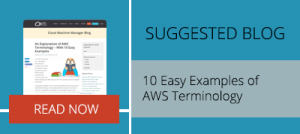
Companies often move to the cloud to benefit from Cloud Computing’s ability to reduce costs and improve efficiency. But when cloud computing is applied across huge IT infrastructure, managers need to find a way to keep an eye on everything that’s going on.
One of the main advantages of cloud computing is its flexibility and ability to grow with your company. And as you grow, you need to make important decisions regarding where additional capacity is needed.
But to do this, you need to have an idea of how cloud resources are being deployed across your IT infrastructure, so you have greater visibility into which applications need more resources. That’s why it’s important for organizations to implement the right monitoring tools.
For example, monitoring CPU usage for particular tasks enables an organization to see which tasks require more resources and which tasks don’t need as much. This can be particularly important when you have applications that periodically spike in usage, and so you need to be in a position where you can allocate enough resources to this application.
These monitoring tools can also be used to assess application response times, page load speeds and availability of the service etc. in order to gain an understanding of how end-users experience the service that you provide. This allows you to narrow down on where improvements can be made within your cloud computing infrastructure to improve efficiency in the use of cloud resources as well as end-user experience.
You could even think about having systems in place that accommodate predictive analytics so that you can gain an understanding of memory utilization etc. to enable you to implement changes to computing resources in advance. The advantage here is that you can prepare your cloud computing resources to be available for applications that will increase in demand.
Monitoring the utilization of cloud computing resources is also an important way to ensure that you are getting exactly what you pay for from cloud providers and that they’re adhering to the Service Level Agreement (SLA).
Hence using monitoring tools, you can assess levels of performance as experienced by users as well as assess what has caused any of the issues that are detracting from a good user experience. This information can then be used to ascertain whether any problems have been caused by the cloud vendor or how the application has been designed.
What this then gives you is a better understanding of your ROI from your cloud infrastructure, and where you can make changes in order to boost your ROI.
Ultimately, utilization monitoring gives you a thorough understanding of how efficiently you are using your cloud resources. By gaining greater visibility into where cloud resources can be used more efficiently, you can use this information to improve your cloud infrastructure and ultimately provide a better experience for end users.


